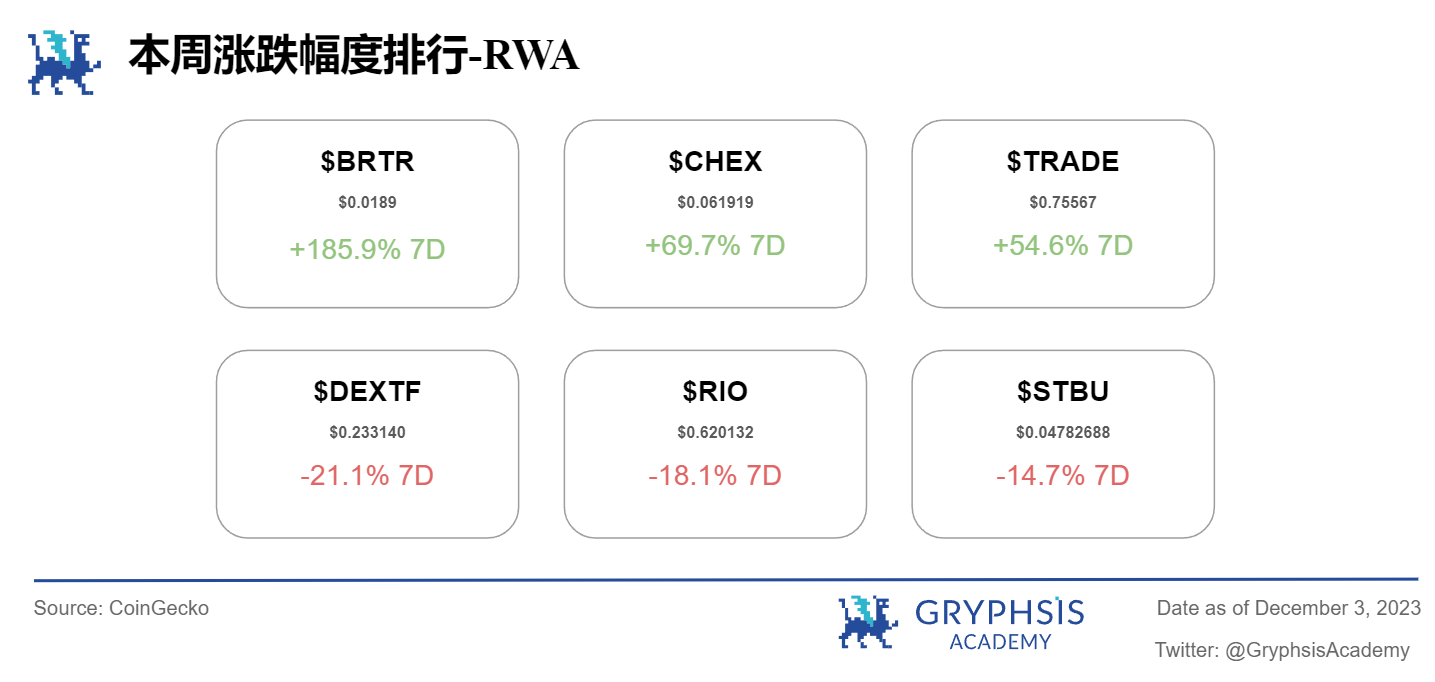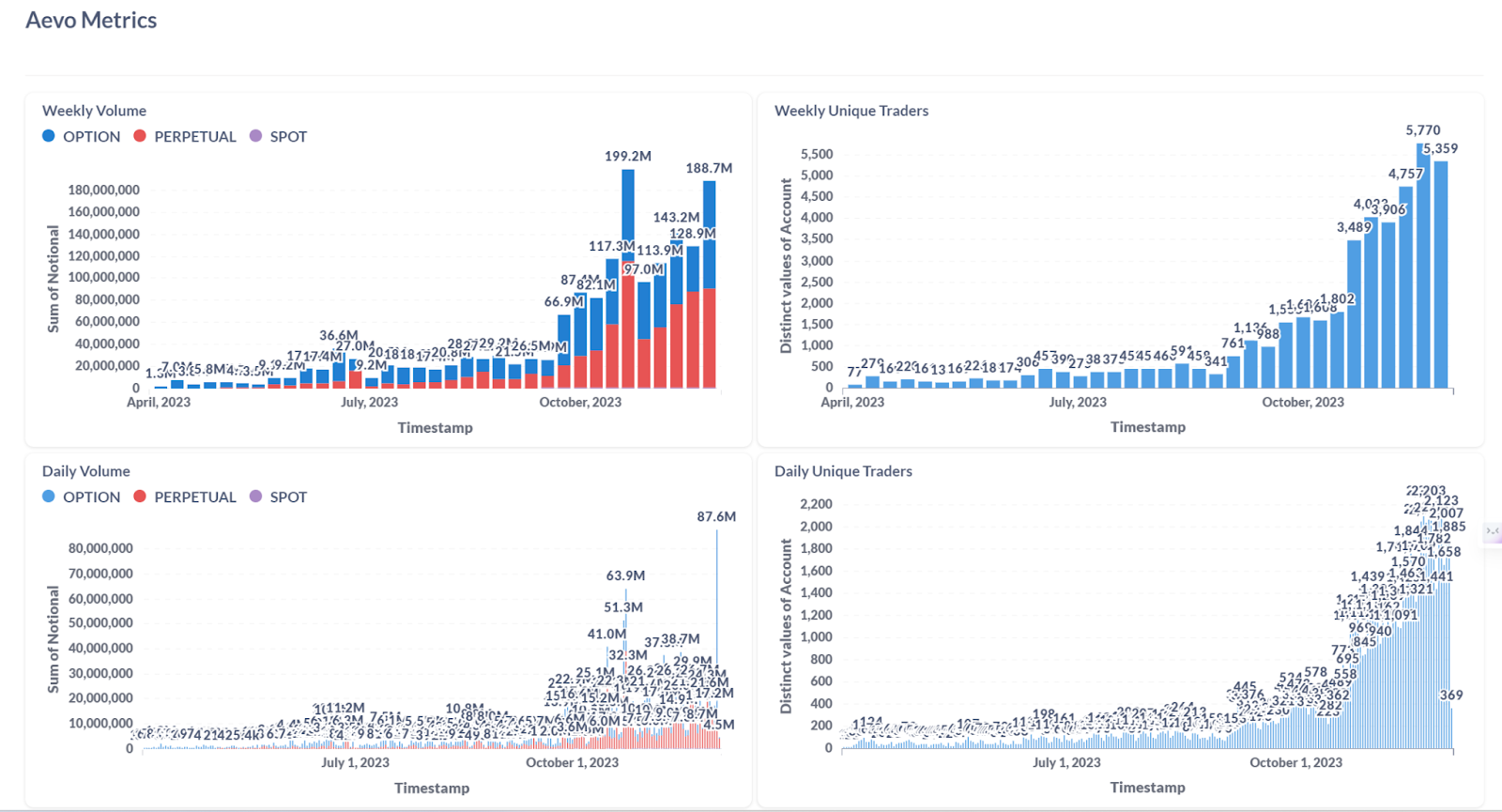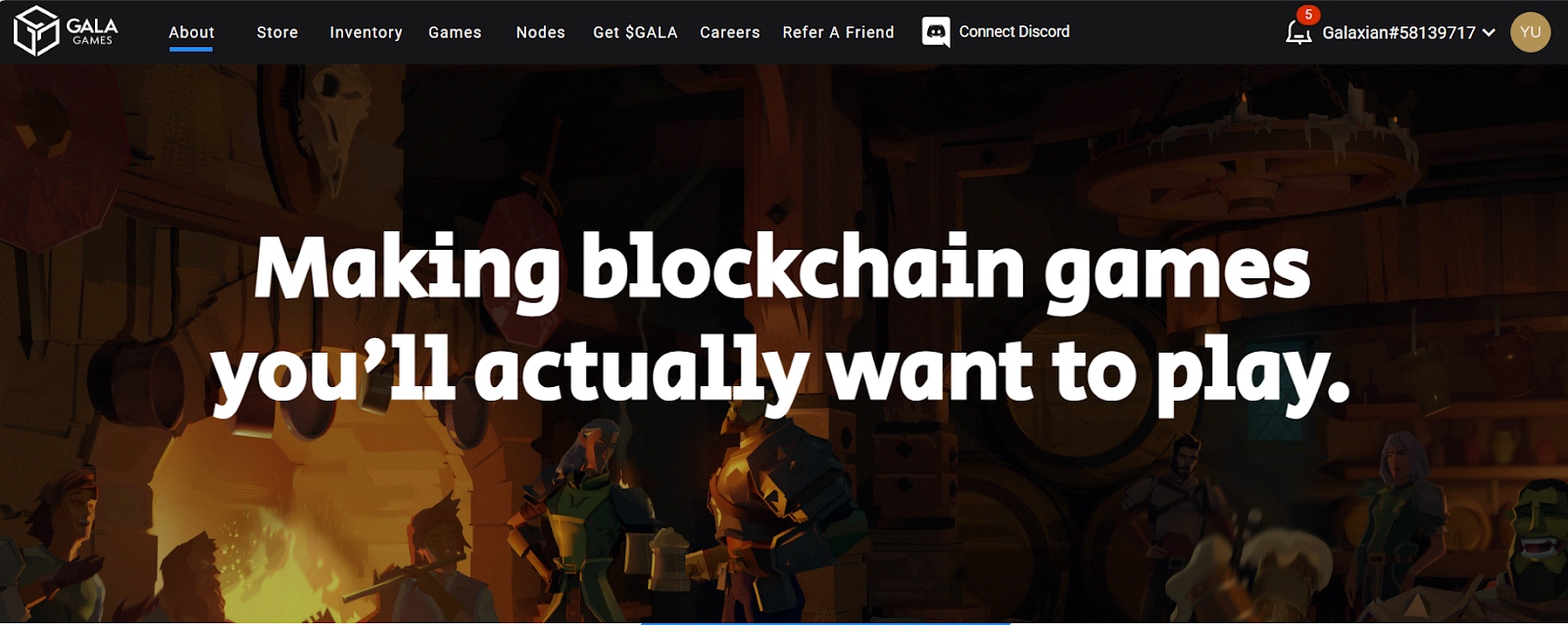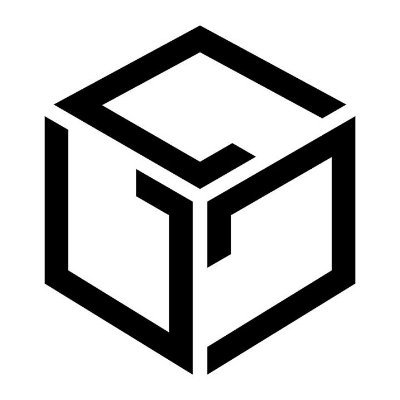Gryphsis Cryptocurrency Weekly: The world's largest Bitcoin futures ETF breaks the historical high of assets under management in 2021

Market and Industry Snapshot:

Layer 2 Overview:
Last week, Layer 2 overall showed positive growth, with Base experiencing the most significant increase at 7.47%. Protocols like Deri, Router Protocol, Interport Finance, and Touch.fan demonstrated noteworthy TVL growth rates.



LSD Sector Overview:
In the LSD sector, the staked amount of Ethereum remained stable, but the total withdrawal amount increased by 12.9%. In terms of market share, sfrxETH saw a notable increase this week at 7.18%, while swETH decreased by 3.22%.


RWA Sector Overview:
Last week, the total market capitalization of real-world assets (RWA) rose by 14.07%, with the industry share at 0.1%. Additionally, RWA tokenized treasury saw a slight decline of 0.29%. Notable growth tokens included $BRTR, $CHEX, and $TRADE. Tokens like $DEXTF, $RIO, and $STBU experienced significant losses.


Main Topics
Macroeconomic Overview:
- US Stock V.S. Crypto
Major Events This Week:
- Largest Bitcoin futures ETF hits record 2021 asset management high
Weekly Protocol Recommendation:
- Aevo
Weekly VC Investment Focus
MYX Finance ($5M)
Wormhole ($225M)
OCEAN ($6.2M)
Twitter Alpha:
@0xAndrewMoh on RWA
@wacy_time1 on recent token unlock
@stacy_muur on MetaBlox
@0xAndrewMoh on MYX Finance
@TheDeFISaint on SCWs
Macroeconomic Overview
This week, the stock market remained stable with no significant changes, while the crypto sector saw a more pronounced increase. $BTC and $ETH rose by 5.2% and 4.8%, respectively. In the coming week, major events to watch include the Reserve Bank of Australia's interest rate decision, ADP non-farm employment changes, initial jobless claims, and average hourly earnings.

Major Events This Week

World's Largest Bitcoin Futures ETF Breaks 2021 Record Highs for Assets Under Management
ProShares' Bitcoin Strategy ETF (BITO) provides Bitcoin futures fund services in the U.S. This week, its assets under management reached $1.47 billion, setting a new record, surpassing the previous high set in December 2021.
Unlike some other Bitcoin futures ETFs, BITO closely tracks the spot price of the asset, and its average daily trading volume ranks in the top 5% of all U.S. ETFs, indicating broad investor interest, likely influenced by a series of Bitcoin spot ETF applications submitted in the U.S.

Simeon Hyman, Global Investment Strategist at ProShares, stated that the record assets under management for BITO indicate that investors need a familiar, straightforward, and regulated way to gain exposure to Bitcoin and related returns. Additionally, as investment giants like BlackRock (BLK) and Fidelity await U.S. regulatory approval for Bitcoin spot ETFs, this buying pressure has contributed to the ongoing rise in Bitcoin prices.
The momentum of BITO has attracted attention not only from institutional investors but also from traders. In June of this year, investors poured in over $65 million in a single week, marking the largest inflow in a year, breaking the previous high of just over $40 million in April.
Overall, BITO's record assets under management reflect increasing investor interest in Bitcoin, driven by a resurgence in institutional demand for the asset influenced by the series of Bitcoin spot ETF applications submitted in the U.S., accelerating the buying demand for BITO and consequently boosting Bitcoin prices.
Weekly Protocol Recommendation
Welcome to our weekly protocol segment—here, we focus on protocols making waves in the crypto space. This week, we spotlight Aevo, a derivatives Layer 2 focused on options and perpetual trading, led by Paradigm, DragonFly XYZ, and Coinbase.

Its development team is the same as that of Ribbon Finance, which voted to merge with the Aevo protocol in August this year. Aevo utilizes customized EVM Roll-up technology to aggregate transactions on Ethereum. Similar to DYDX, it publishes and matches trades off-chain, with execution and settlement handled by smart contracts deployed on the L2 Rollup. Currently, it supports three chains: Arbitrum, Ethereum, and Optimism.
It has designed an off-chain risk engine to check whether account margin requirements are met to create orders. Users' assets and positions are kept on-chain in smart contracts.

Notably, Aevo is deployed on its customized Aevo Rollup, essentially built using the OP Stack as a Layer 2. Aevo introduces its own sequencer, Conduit, which arranges, packages, and sends transactions to Ethereum when they occur. Aevo Rollup provides a 2-hour transaction dispute period; if a transaction published on Ethereum needs to be withdrawn, it takes only 2-3 hours for full confirmation.
In addition to supporting traditional trading functions, Aevo also supports Pre-Launch Futures. Recently, tokens like $PYTH, $BONK, and $BLAST have been updated rapidly, allowing users to trade before the project teams issue tokens, enabling immediate token acquisition post-launch. Traders need to purchase tokens at contract expiration or sell them for profit, thus achieving higher returns after the project officially launches.
https://docs.aevo.xyz/aevo-exchange/perpetuals-specifications/blast-pre-launch-futures
Since Aevo has merged with Ribbon, the native token $RBN issued by Ribbon will also convert to $AEVO before January-February 2024. Users need to lock for three months to exchange for $sAEVO (Staked Aevo), and holders of $sAEVO will enjoy the following benefits:
a) All active rewards will be doubled (the official is preparing some large events)
b) Discounts on all product service fees
c) Propose new governance proposals
d) Be eligible for nomination as committee members
e) 2x voting power
Since $AEVO is derived from $RBN, there will be no significant changes in distribution and quantity for $AEVO holders. In the economic model of $RBN, the DAO holds 45% of $RBN, and in the latest proposal, the future uses of $AEVO have been redistributed.
Overall, the economic model of $AEVO is clear, and after the rebranding, it will focus on incentivizing users to stake for $sAEVO. Users can enjoy more rights through holding, and in the future, $AEVO will promote user interaction and platform development through various incentive forms.
Our Insights
Options trading allows users to purchase assets at a fixed price, with the current overall market cap of the sector at $78.69M, placing it in the latter part of the DeFi sector, indicating significant development space. Currently, Lyra, Dual Finance, and Aevo dominate the market. For Aevo, the overall trading volume and active user numbers are on the rise, showing optimistic development.

Since August 25, after Ribbon Finance announced the merger and the corresponding updates to Aevo's token economic model, $RBN has shown an upward trend.

If users want to participate in the Aevo ecosystem, there are several paths:
Currently hold $RBN, and after supporting conversion, swap to $sAEVO to enjoy its benefits within the next three months.
If you do not hold $RBN, you can buy $AEVO after its launch, which can be held or staked for $sAEVO to enjoy benefits.
Since holding $sAEVO requires a three-month unlocking period, and the official has clarified incentives for $sAEVO holders, whether you choose to hold $RBN now or buy $AEVO after launch and stake it, it will take three months to obtain $sAEVO tokens, with no difference in timing. However, it is necessary to consider the cost difference between the current price of $RBN and the future price of $AEVO after rebranding.
Considering that the official is currently focusing on incentivizing users to stake $AEVO and providing various incentives, this will reduce the market supply side of $AEVO to some extent, thereby raising prices. Generally speaking, token rebranding or new narratives for products usually trigger some positive sentiment, which may drive prices up. Therefore, a basic judgment can be made regarding the current price of $RBN and the subsequent price of $AEVO.
However, participants still need to consider the three-month unlocking cycle and whether the actual returns will affect capital efficiency and how the corresponding governance rights will benefit holders. Currently, Aevo plans to convert the previous Ribbon DAO into Aevo DAO, but whether the platform's specific governance mechanism can realize governance rights remains to be observed.
In summary, the overall development trend of Aevo is optimistic, as its narrative as a Layer 2 for options trading is novel, and its technology clearly utilizes the OP Stack solution. Coupled with the official rebranding expectations and staking incentives, it may attract a new round of growth.
Gryphsis Research Focus
Welcome to this week's "Gryphsis Research Focus," where we share our team's latest insights. Our dedicated research team continuously explores the forefront trends, developments, and breakthroughs in the crypto space. This week, we are excited to share our newly released report, so let's dive in!

Recently, major chain game tokens have been stirring, and the GameFi sector has experienced a small surge, seemingly returning to the public eye after a long period of dormancy. Gala Games has led the charge with an increase of over 100%. What is the reason behind $Gala's strong performance? With the market stabilizing, can the long-dormant chain game sector revive, and can $Gala become a value investment target in GameFi?
Gala Games is a blockchain game development company founded in 2018, aiming to build a decentralized gaming ecosystem. Gala Games serves as both a game development platform and a game aggregation platform.

Gala has established dedicated network nodes, with the entire gaming ecosystem operating on a distributed node network rather than centralized servers controlled by a single entity. Gala's founder nodes will power the operation of the Gala ecosystem. Node users can vote through consensus to decide which games can be launched on the Gala Games platform, and all major community decisions are made through node voting.

The Gala team has strong ties with Zynga, with most team members having worked at Zynga. Zynga, founded in 2007, is a social gaming service provider with a broad global influence in over 175 countries and regions, with more than 20.07 billion downloads on mobile devices. The FarmVille series and Zynga Poker are among Zynga's most popular titles.

Gala did not conduct an ICO or any form of financing; all funds for founding Gala were provided by the founders. We can speculate that Gala's establishment received strong support from Zynga. From an outcome-oriented perspective, the sale of founder nodes is essentially a disguised form of financing.

The current main uses of $Gala are to purchase founder nodes and in-game NFTs. The official also stated that in the future, Gala's Project GYRI will enhance the role of the Gala token in the ecosystem.
Currently, the price of founder nodes on the official website is around 5M Gala, which, based on the current market price, is approximately $100,000. The maximum number of founder nodes issued is 50,000, and the current active nodes have reached around 44,000. Using Gala to purchase founder nodes is similar to mining; this node is a POS node, and half of the daily Gala output will be distributed to founder nodes. The longer the operation time, the more rewards obtained. Every July 21, the daily Gala output will be halved.

Additionally, to address the issue of reduced daily rewards for founder nodes due to the halving every July, Gala introduced the PAY-BY-BURN burning mechanism on January 13 this year. Subsequently, when purchasing and paying with Gala on the platform, the Gala used for purchases will be burned, and an equivalent amount of Gala will be distributed to founder nodes, increasing node earnings.
$Gala underwent a Gala V2 upgrade on May 15 this year. The chart accurately records the daily minting quantity and burning amount before and after the contract swap, from the start of Gala minting on September 11, 2020, to now. It has been 948 days since minting began, with a total minting volume of approximately 4.83 billion, a total circulating supply of about 2.73 billion, and a maximum supply still at 5 billion.

Regarding team revenue, although Gala officially states that it is used to support project development and fund the ecosystem, many community members remain concerned that the Gala team will sell a large amount of its tokens, leading to price declines. To address this, during the contract swap on May 15 this year, the Gala team directly burned nearly 2.1 billion $Gala tokens in their possession.

Combining the economic model of $Gala with this burning mechanism and the annual halving of $Gala output, once a blockbuster game is developed leading to increased demand, $Gala could easily transition into a deflationary model.
According to data, as of November 22, 2023, there are 18,726 addresses holding $Gala on Ethereum. The top 10 addresses hold 42.81% of $Gala, while the top 100 addresses account for 73.26%, with most of the top 10 addresses being exchange addresses.

According to Trading View data, $Gala hit a bottom on October 19 and began to surge in volume in the following market, currently priced around $0.025, rebounding approximately 100% from the bottom, forming a standard W bottom structure, with the neckline touching a strong support point from the previous downtrend. It is evident that $Gala has likely completed its bottom formation and is ready for the upcoming bull market.

According to Binance contract data, the recent long-short ratio of positions, the long-short ratio of large holders, and the long-short ratio of large accounts are all significantly greater than 1, indicating that both large holders and retail investors are relatively bullish, showing a positive attitude towards the future price of $Gala.

Although there are signs of recovery in the chain game sector recently, overall, from 2022 to now, the GameFi sector has remained in a sluggish state. If the GameFi boom in 2021 was a result of ample market funds and speculation, the current prices of GameFi tokens are still returning to value after the bubble burst, stabilizing at the bottom stage.

The logic of the GameFi sector in the last bull market was the P2E play-to-earn mechanism, attracting a large crowd and driving up token prices. Gala, as one of the representatives, achieved a thousandfold increase, but unlike most chain games, it truly focuses on player experience rather than the pursuit of quick profits. Gala aims to make people play blockchain games not for the money, but because the games are genuinely fun.
While most Web3 gaming companies like Immutable X and Axie Infinity increasingly focus on P2E and infrastructure development, Gala Games' titles like GRIT and Spider Tanks consistently narrate their vision of "creating the blockchain games you truly want to play" through their excellent production quality, engaging gameplay, and meticulous attention to detail.

In terms of game development teams, Gala Games' team is one of the few in the chain game field composed of well-known traditional game industry developers. Compared to other chain game teams, Gala's game production standards and delivery levels are significantly superior. The image shows Art Director Craig, who has participated in the design of various games.

Project development inevitably comes with risks. The team's high standards for game quality and long development cycles, along with Gala's relatively centralized operational approach, may negatively impact Gala's development.
Currently, the price of $Gala has rebounded from the bottom, indicating that we have exited the bear market. With the recovery of the chain game sector and the stabilization of the overall market, the project party prioritizes community interests by burning tokens, genuinely aiming to develop a great game, upgrading the economic model, and successfully bottoming out financially. If you are optimistic about the GameFi sector and can manage risks reasonably, $Gala is undoubtedly a token worth value investing in. All these factors indicate that Gala is ready to embrace the bull market. I believe that with Gala's vision and ambition, creating truly enjoyable Web3 blockbuster games and retaining users long-term is only a matter of time.
Weekly VC Investment Focus
Welcome to our weekly investment focus, where we reveal the most significant venture capital dynamics in the crypto space. Each week, we will highlight the protocols that have received the most funding.
MYX Finance
MYX, a decentralized perpetual contract exchange incubated by D11 Labs, recently announced the completion of a $5 million seed round, achieving a valuation of $50 million. This round was led by Sequoia China, with participation from Consensys, hackVC, OKX Ventures, Redpoint China, HashKey Capital, and others. MYX plans to accelerate technological innovation and market expansion, advancing the rapid launch and scalable development of its mainnet products.
https://x.com/MYX_Finance/status/1729479613674590224?s=20
Wormhole
Wormhole successfully raised $225 million, achieving a valuation of $2.5 billion, with investors including Brevan Howard, Coinbase Ventures, and Multicoin Capital. The company has also established an independent technology company, Wormhole Labs, becoming a core contributor to Wormhole.
https://x.com/wormholecrypto/status/1729869578963222945?s=20
OCEAN
Jack Dorsey led a $6.2 million seed round to support Mummolin's OCEAN project—a decentralized Bitcoin mining pool and the launch of other decentralized mining projects. OCEAN plans to provide non-custodial payments directly to miners from block rewards. OCEAN aims to help miners regain autonomy and decision-making power in more complex mining operations, and it is designed to be non-custodial, transparent, and permissionless.
https://x.com/jack/status/1729698161806000569?s=20
Protocol Events
Binance ending support of BUSD stablecoin in December
Celsius starts to open crypto withdrawals for holders of some claims
Wormhole closes $225 million funding round at $2.5 billion valuation
Sei blockchain to add EVM support in V2 upgrade
Velodrome, Aerodrome hit by attack on front-end websites
Industry Updates
U.S. Treasury's Wally Adeyemo calls for more authority to go after bad actors in crypto
Bankruptcy court says FTX debtors can start selling assets including Grayscale units
Crypto custody firm Copper launches institutional trading platform for tokenized securities
SEC asks public for feedback on proposed spot bitcoin ETFs from Franklin Templeton, Hashdex
EU lawmakers want metaverse strategy that supports the bloc's businesses
Twitter Alpha
There is a wealth of Alpha in crypto Twitter, but navigating through thousands of tweet threads can be challenging. Each week, we spend hours researching to curate insightful threads and present you with a weekly selection. Let's dive in!
https://x.com/0xAndrewMoh/status/1729087473895301430?s=20
https://x.com/wacy_time1/status/1729899827423539231?s=20
https://x.com/stacy_muur/status/1730157832602083441?s=20
https://x.com/0xAndrewMoh/status/1730094341614678054?s=20
https://x.com/TheDeFISaint/status/1729888296589721724?s=20
Upcoming Events












